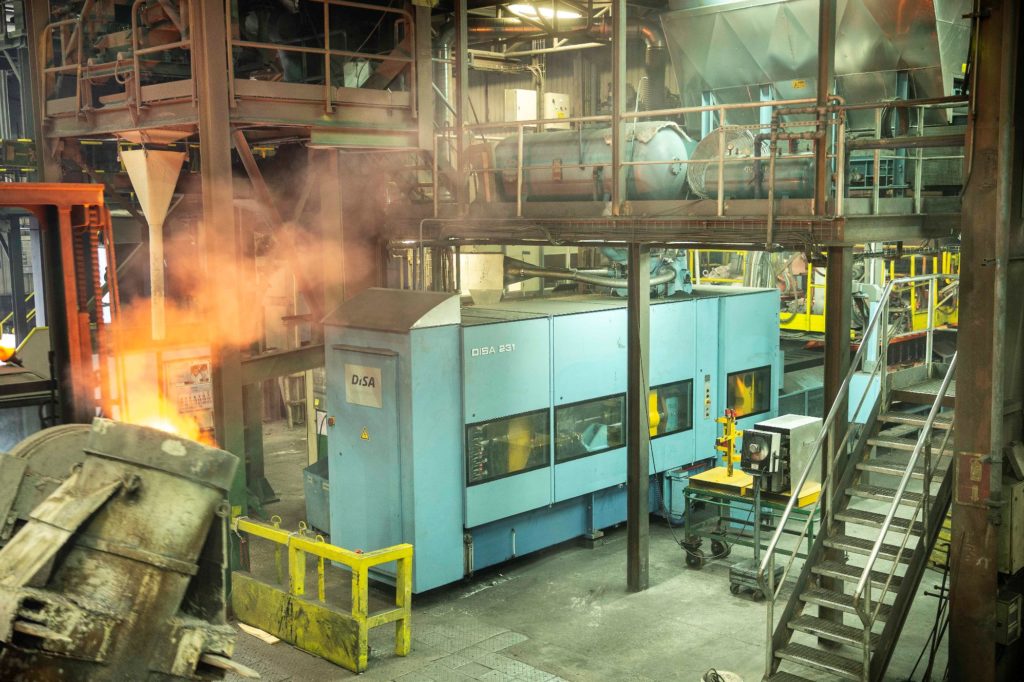
News | Industrial Combustion Equipment
All the latest News on our company
Industrial waste heat, how to reuse energy wasted in production processes
Posted on: 21 / 08 / 2021 | 0 Comentarios | Tags: Calor residual industrial, Energía desaprovechada, energía térmica, Industrial waste heat, thermal energy, Wasted energy
The energy wasted in production processes could have a new life and contribute to the fight against climate change. The industrial waste heat generated in the Basque Country could be reused and would mean considerable energy savings in the facilities. Researchers from the UPV / EHU University have identified the potential of these sources of energy wasted so far in production processes and they propose its recovery and reuse in other processes. In a context of the high cost of fossil fuels and the great environmental impact they represent, it is unthinkable to waste thermal energy.
Many of the traditional industrial processes generate heat that normally is evacuated to the atmosphere and that nevertheless could be reused. In production processes such as foundry, steel, paper or cement, which are very present in the Basque Country, between 35% and 50% of the heat generated is lost. Efficiently reusing that industrial waste heat or recovering it to be used in other processes shows significant potential to increase energy efficiency in industry. However, to design strategies that take advantage of this potential, it is necessary to have data on the quantity and characteristics of the flows of this industrial waste heat. This information is not always easy to obtain and many companies do not even have a systematic record of the energy flows present in their production processes.
Wasted energy in industrial processes
The ENEDI research grup of the University of the Basque Country (UPV/EHU) has made an estimate of the residual heat that could be used and reused in the industry of the Basque Country. It has been verified that, for residual heat flows above 400 ° C, more than 90% of the companies studied present return periods of less than five years for investments in the recovery of this usually discarded heat.
“In this work, four different methods are applied to determine the potential for industrial waste heat recovery in the Autonomous Community of the Basque Country. These estimates are based on two reference indicators: fuel consumption (diesel and natural gas) and CO2 emissions”, according to Pello Larrinaga, researcher at the UPV / EHU’s ENEDI research group.
“We have observed that Vizcaya is the Basque province with the greatest potential. This is explained by the fact that it has a more energy-intensive industry than the other two provinces, in which the industrial activity has other characteristics: in Guipúzcoa there are many related companies. with the manufacture of machine tools and the auxiliary automotive industry, sectors in which no relevant industrial residual heat data have been identified; in the case of Álava, the residual heat sources are concentrated in very specific industrial areas “, he indicates.
Waste heat outlet temperature
An important data is to know the outlet temperature of this residual heat to evaluate the use that can be made of it. Thus, if that heat comes out at high temperatures, it can give more use and it can be recovered more easily. In the aforementioned study, 36% of the estimated recovery potential is emitted at more than 500° C and 7% specifically at more than 1,000° C. With the residual heat at lower temperatures (less than 200ºC), it is more difficult to give continuity to this residual heat since the range of applications is much more limited ”.
In this work, the researchers have observed that in the companies studied, 37% of the estimated residual heat is found at temperatures below 200 ° C. For this reason, the materials with which they work and the thermal storage devices that they are currently designing are designed to recover this type of heat. This happens because if said reuse cannot be carried out immediately, a storage system is necessary to accumulate that heat until it can be used at another time.
How to recover wasted energy in production processes
The research group has verified that “for residual heat fluxes above 400° C, more than 90% of the companies studied present return on investment periods of less than five years. In the case of industries with residual heat temperatures below 200° C, the proportion decreases to around 40%, a value that is still remarkable. The estimates show an important opportunity to implement solutions to recover this wasted energy, especially in the steel sector and in the petrochemical industry. But of course, all this requires in most cases a modification in the infrastructures or in the production processes. In other words, companies have to have ambition to make this type of investment. Therefore, the development of public policies that promote these measures would also be beneficial. “
For the research team, made up of Pello Larrinaga, Álvaro Campos-Celador, Jon Legarreta and Gonzalo Diarce, this study is only an estimate, since they are sure that there is more residual heat than observed. In a second phase, the team’s next step is to carry out a more exhaustive evaluation that includes detailed information on the production processes, the characteristics of the waste streams, their flow rates and temperatures. “Future work will involve the validation of the proposed methodology through collaboration with local companies from different industrial sectors,” says Pello Larrinaga.
EMC contribution to recovering thermal energy
E&M Combustion engineering company develops innovative combustion technologies adapted to the needs of its customers, which provide specific solutions in Industrial Combustion processes with the aim of obtaining industrial burners with low polluting emissions that allow, at the same time, significant energy savings. The company carries out audits and energy saving studies in plants that incorporate combustion equipment and industrial burners. These studies help customers determine if they can recover residual energy in order to further reduce operating costs, and allow evaluating the return on investment with the installation of more efficient burners, as well as combustion optimization equipment, variable speed drives frequency for fans, etc.
Among the solutions to improve energy efficiency in industrial facilities, E&M Combustion, in addition to recommending thermal insulation to avoid heat losses, proposes to the industrial sector the use of heat recovery systems such as Combustion Air Preheaters, an equipment typical consumer powered by waste heat. This equipment improves the performance of boiler or furnace installations, by allowing the transfer of heat from the outgoing combustion gases to the atmosphere, which thus enters the burner or combustion hearth, reducing the chimney outlet temperature. Likewise, the F.G.R., Flue Gas Recirculation systems, make gas recirculation possible while reducing NOx emissions.




